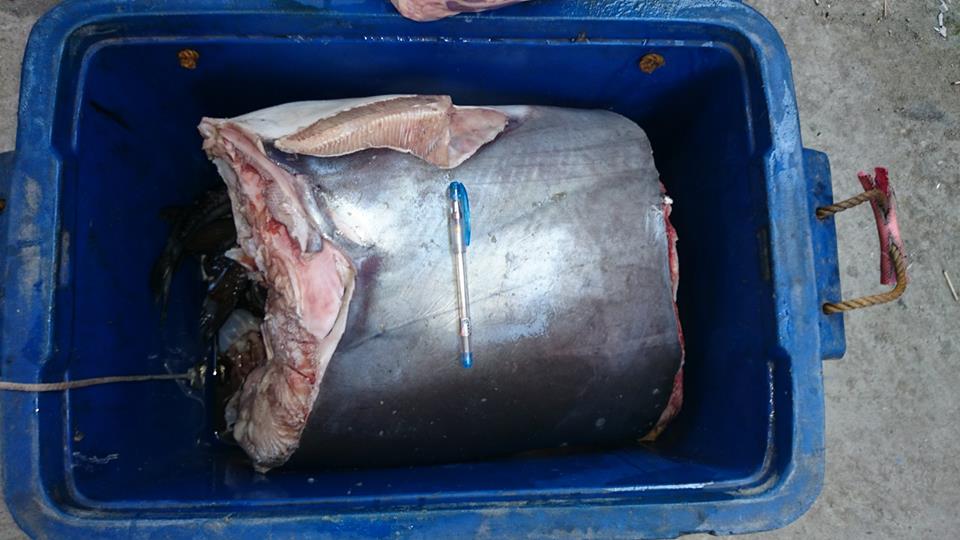WITHOUT its head and long tail that distinguishes a thresher shark from other types, how could you tell what kind of fish meat was intercepted by the Capitol’s anti-illegal fishing enforcers?
“The skin is much thinner,” said Gary Cases, a veteran diver and ocean advocate, who was called in to identify the cargo of a truck stopped at a checkpoint in Naga City.
The large chunks of frozen fish meat also had a very strong, fishy smell (“langsa”), caused by urea excreted in the skin of sharks.
Cases inspected the skin, whose rough texture was made of dentine and not ordinary fish scales.
Whole pieces of skin were found folded and packed separately in the truck. Cases said it appears the sharks were quite large.
He took tissue samples to be sent to England for DNA laboratory testing.
Aside from being a marine biologist, Cases has spent over five years as collaborator of an ongoing international study on the conservation of thresher sharks led by Dr. Simon Oliver of England.
Cases, who was born in Dipolog, said he was also familiar with identifying fish meat because his family used to have a sardines business.
The shark fins, which fetch a higher price for exotic soups in Chinese restaurants, were missing as well as the heads in the confiscated cargo.
Cebu Daily News reported in May 8 that shark traders in Talisay City were selling the shark meat to processors of fishballs and seafood “tempura”.
But the trend has been going on much longer, said Cases, due to changes in market demand and price.
Sold for P50 a kilo, shark meat has replaced “galunggong” or scad as the main material for fish balls and processed seafood tempura.
“Galunggong” or scad used to be the “poor man’s fish” and had low commercial value. Today it’s priced at P70 or P80 a kilo, and harvested for canned sardines and a higher value product – artificial crab sticks, he said.
Sharks have become the cheap alternative for processed seafood.
All three thresher shark species are listed as vulnerable to extinction by the International Union for Conservation of Nature (IUCN).
“They are more valuable alive than dead,” said Cases, who has been lobbying for legislation to protect sharks.
He said more income can be made through shark tourism, the way Malapascua island in Daanbantayan has become an international dive spot due to the presence of thresher sharks.
Thresher sharks are migratory, and don’t attack humans, which makes them a popular choice for divers.
Malapascua island is one of the few places you can find thresher sharks in shallow waters at 10 meters to 20 meters.
This species is slow to mature and reproduce, said Cases. It takes 11 to 12 years for a thresher shark to reach sexual maturity. The female gives birth to only two pups.
Sharks are being hunted for their meat, liver oil, skin and fins for use in shark fin soup.
The long tail of the thresher shark, its distinctive feature, is used to wack a school of fish to stun them before eating.
Related Stories:
Sharks for sale: Hammerheads, thresher sharks still hunted in Daanbantayan for fins, meat
BFAR ‘unaware’ of Talisay shark trade, starts probe
Truck transporting thresher sharks seized in Naga City, Cebu
Disclaimer: The comments uploaded on this site do not necessarily represent or reflect the views of management and owner of Cebudailynews. We reserve the right to exclude comments that we deem to be inconsistent with our editorial standards.

